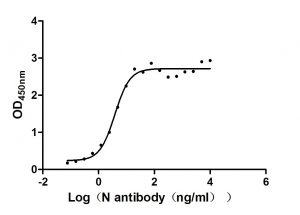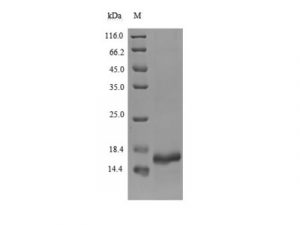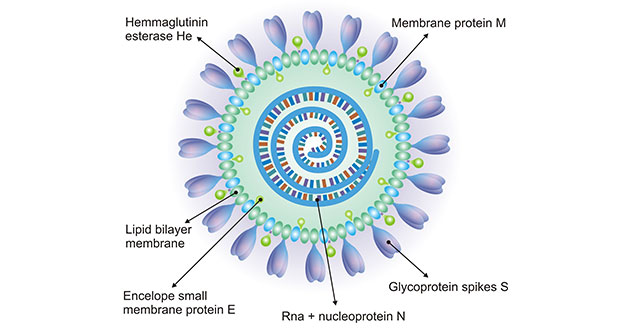Abstract
Since the COVID-19 pandemic, more than two million worldwide have died from the virus. To address one of the biggest challenges we face, numerous researchers are making unprecedented efforts to combat COVID-19. To support COVID-19 research, CUSABIO has developed a large number of reagents related to SARS-CoV-2, including antibody, protein, and ELISA kits. Here we list several of the most popular products among customers, which will meet the needs of various COVID-19 investigations in clinical and research laboratories.
Spike glycoprotein Proteins
The Spike protein is one of the main structural proteins of severe acute respiratory syndrome-coronavirus. It is essential for the interaction of virions with host cell receptors and the subsequent fusion of the viral envelope with the host cell membrane to allow infection. Some coronavirus spike proteins are proteolytically cleaved into two subunits, S1 and S2. The spike protein (S protein) has a critical role in viral infection and pathogenesis.
With the 2019 Novel Coronavirus (SARS-CoV-2, 2019-nCoV) outbreak, the spike protein is receiving more and more attention. CUSABIO is one of the companies that researches and manufactures reagents related to the cutting-edge protein for SARS-CoV-2 research in the world.
There are now 10 recombinant spike proteins for SARS-CoV-2 research added to our spike protein catalogue. They are characterized by their high purity (most over 90%) and low level of endotoxins. The bioactivity of some SARS-CoV-2 Spike proteins has been validated. Except for the Spike proteins of SARS-CoV-2 (2019-nCoV), you can also find Spike proteins for other species in the following catalogue. The quality is guaranteed. And our technical team will be here to support you.

The characteristics of SARS-CoV-2 spike glycoprotein proteins
- Various expression systems and labels CUSABIO provides five expression systems and multiple labels to meet different customer requirements.
- Most Spike Glycoprotein are in stock with low endotoxin
- Most Purity > 90%
What is coronavirus?
Before introducing SARS-CoV-2, let’s understand what coronavirus is. Cusabio CoronaVirus Proteins are a large family of viruses that can cause respiratory illnesses such as the common cold. Almost everyone is infected with coronavirus at least once in their life, but symptoms are usually mild to moderate. Most coronaviruses are not dangerous, but some are.
Those that causes Middle East respiratory syndrome (MERS) or severe acute respiratory syndrome (SARS) can be deadly. The coronavirus genome encodes a spike (S) protein, an envelope protein, a membrane protein, and a nucleoprotein in this order. Among them, the spike protein is the most important surface membrane protein of the coronavirus.
What is SARS-CoV-2?
SARS-CoV-2 was discovered because of the Wuhan Viral Pneumonia cases in 2019 and was named by the World Health Organization on January 12, 2020. It belongs to the beta genera of the Coronaviridae family in 2003, along with SARS coronavirus (SARS CoV) in 2003 and MERS coronavirus (MERS CoV) in 2012. The alignment between SARS-CoV-2 and 2002 SARS CoV has approximately 70% sequence similarity and 40% sequence similarity. % with MERS CoV.
There is currently no specific treatment, but many symptoms can be managed and should be treated according to the patient’s clinical situation. CUSABIO paid close attention to the progression of SARS-CoV-2. Once we got the virus gene sequence information, we quickly developed and produced SARS-CoV-2-related products. Targets include the Spike (S) protein, the N (N) protein, and ACE2. In addition, we also offer various coronavirus products to meet the needs of scientific research.
How is SARS-CoV-2 spread?
The virus is reportedly spreading from person to person in many parts of China and some other countries by interacting with ACE2 from the mucous membrane of the eyes, mouth, and nose. On January 30, the Centers for Disease Control and Prevention (CDC) identified the first case of person-to-person spread in the United States.

In terms of how the virus would be contracted, the CDC says that human coronaviruses are most commonly spread between an infected person and others through:
- The air (from viral particles from a cough or sneeze);
- Close personal contact (touching or shaking hands);
- An object or surface with viral particles on it (then touching your mouth, nose, or eyes before washing your hands);
- And rarely by faecal contamination.
What are the symptoms of SARS-CoV-2 infection?
- The main symptoms are fever, fatigue and dry cough;
- Nasal congestion, runny nose, and other upper respiratory symptoms are rare;
- Approximately half of the patients experienced dyspnea after one week, with severe cases rapidly progressing to acute respiratory distress syndrome, septic shock, difficult-to-correct metabolic acidosis, and coagulopathy.
It is worth noting that in the course of severe and critical patients, there may be moderate to low fever, even without obvious fever. Some patients have mild onset symptoms and no fever. They usually recover after 1 week. Most patients have a good prognosis, and some patients are seriously ill and even die.
Where does SARS-CoV-2 come from?
Currently, the origin of SARS-CoV-2 is also unclear. But experts assume that the origin is still wildlife like other coronaviruses. Coronaviruses originate in animals, such as camels, civets, and bats, and are generally not transmissible to humans. But occasionally, a coronavirus mutates and can jump from animals to humans and then from human to human, as was the case with the SARS epidemic in the early 2000s.
China’s National Health Commission confirmed that 15 workers at the health have been infected, indicating that the virus can spread from person to person. Writing here, you may be confused if I should be concerned about pets (such as dogs and cats) carrying SARS-CoV-2. Exactly, there is no evidence to suggest coronavirus in dogs and other pets. However, the CDC recommends that travellers to China avoid both live and dead animals.
